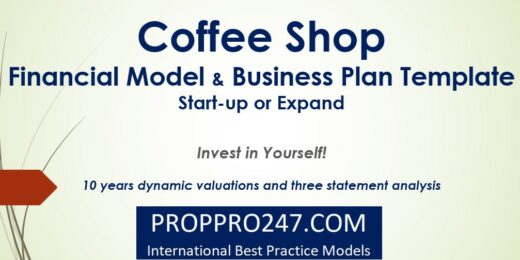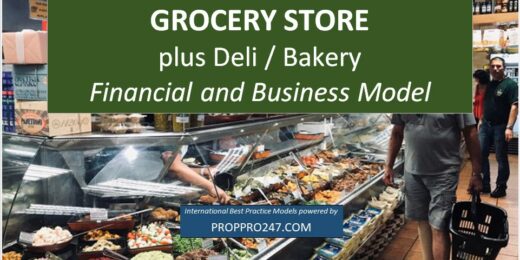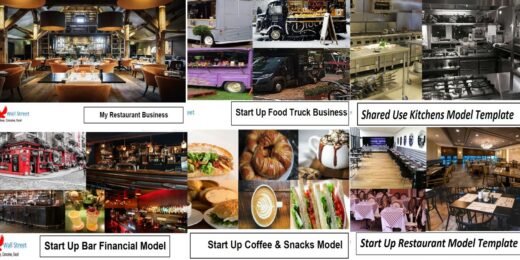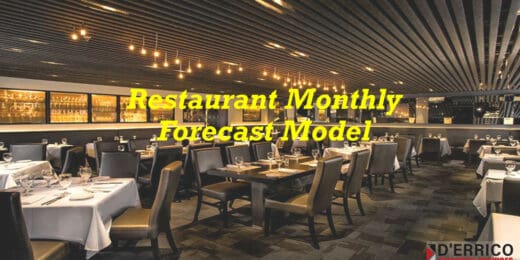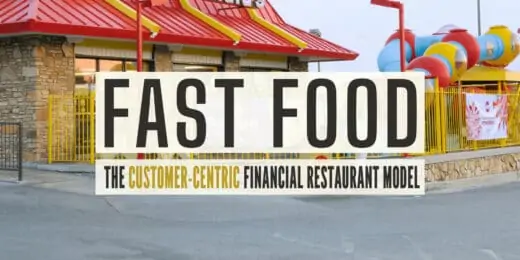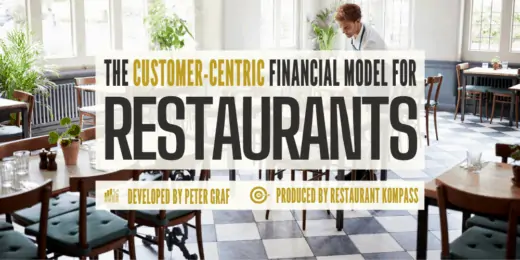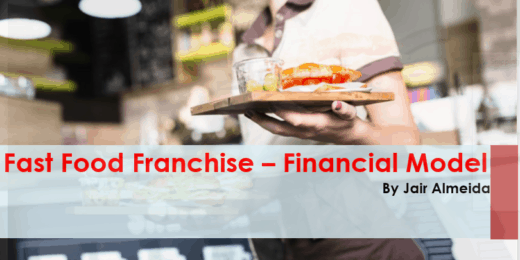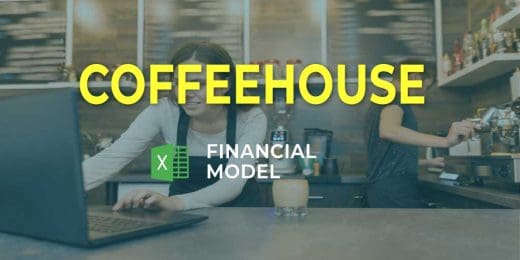Cafes
Fast Food Restaurant Financial Model Template
Maximize fast food financials with our user-friendly financial model template.…
Food Bar Financial Model 5 year 3 Statement
A comprehensive editable, MS Excel spreadsheet for tracking Food Bar…
Restaurant Finance Model 5 Year 3 Statement
A comprehensive editable, MS Excel spreadsheet for tracking Restaurant finances,…
Coffee Shop Financial Plan and Budget Control
This Excel model is a highly adaptable and user-friendly tool…
Beverage Trailer (Self-Pour or Manual) 10-year Financial Model
This beverage trailer financial model will provide you with 10…
Food and Beverage Financial Model Template
Elevate your food and beverage business with our plug-and-play financial…
Ice Cream Shop – 5 Year Financial Model
Financial Model providing an advanced 5-year financial plan for a…
Golf & Entertainment Center – 5 Year Financial Model
Financial Model providing an advanced 5-year financial plan for a…
Coffee Shop Financial Model & Business Plan Template 10 years (Start-up or Expand)
This Coffee Shop 10-year Financial Model also has a Business…
Market Entry Feasibility Study for Coffee Shops Industry
This model include market entry feasibility study in word format…
Restaurant and Bar Financial Model Template
Financial model template for an eating establishment in which customers…
Gourmet Food Store Financial Model Excel Template
Gourmet Food Store Financial Model Allows you to start planning…
Confectionery Shop Financial Model Excel Template
Confectionery Shop Financial Plan Allows investors and business owners to…
Grocery Store plus Deli/Bakery 10 year Financial and Business Model
This Grocery Store 10-year Financial and Business Model also contains…
Light-Meal Food Bar Financial Model-5-year DCF Valuation
This model provides a full 5-year financial model for a…
Subway Cafe Financial Model Excel Template
Subway Cafe Financial Model Allows investors and business owners to…
Coffee And Snack Financial Model Excel Template
Coffee And Snack Pro Forma Template Create fully-integrated financial projection…
Multi Cuisine Cafe Financial Model Excel Template
Multi Cuisine Cafe Budget Template Solid package of print-ready reports:…
All Day Bar & Restaurant Financial Model Excel Template
All Day Bar & Restaurant Budget Template There's power in…
Cat Cafe Financial Model Excel Template
Cat Cafe Budget Template Enhance your pitches and impress potential…
Karaoke Bar Business Plan Financial Model Excel Template
Order Karaoke Bar Pro Forma Projection. Spend less time on…
Restaurant Monthly Forecast Model Template
The Restaurant Monthly Forecast Model provides a 3-year annual and…
Coffee Shop – 5 Year Financial Model
Financial Model providing an advanced 5-year financial plan for a…
FAST FOOD The Customer-Centric Financial Restaurant Model
Starting a fast food restaurant without a financial plan is…
Coffee Shop – The Customer-Centric Financial Model
Starting a Coffee Shop without a financial plan is like…
The Customer-Centric Financial Model for Restaurants
Starting a restaurant without a financial plan is like driving…
All-day Restaurant & Bar – 5 Year Financial Model
Financial Model providing an advanced 5-year financial plan for an…
Restaurant Financial Model: Adaptable to all Types of Outlets
Our full-fledged financial model in excel format has the functionality…
Tea Store Financial Model Excel Template
Try Tea Store Budget Template. Enhance your pitches and impress…
Bistro Financial Model Excel Template
Check Our Bistro Financial Model. Requesting a loan without a…
Bubble Tea Cafe Financial Model Excel Template
Discover Bubble Tea Cafe Financial Model Template. Creates a financial…
Breakfast Restaurant Financial Model Excel Template
Order Breakfast Restaurant Financial Projection Template. Allows you to start…
Cigar Lounge Financial Model Excel Template
Order Your Cigar Lounge Pro Forma Projection. There's power in…
Coffeehouse Financial Model Excel Template
Discover Coffeehouse Financial Projection Template. Creates 5-year financial projection and…
Coffee Truck Financial Model Excel Template
Get the Best Coffee Truck Financial Projection Template. Creates a…
Sports Bar Financial Model Excel Template
Discover Sports Bar Financial Model Template. Creates a financial summary…
Sandwich Bar Financial Model Excel Template
Download Sandwich Bar Pro-forma Template. Allows investors and business owners…
Snack Bar Financial Model Excel Template
Get Snack Bar Financial Model Template. Creates 5-year financial projection…
Beer Bar Financial Model Excel Template
Get the Best Beer Bar Financial Plan. Create fully-integrated financial…
Wine Bar Financial Model Excel Template
Download Wine Bar Financial Model. Generate fully-integrated Pro-forma for 5…
Coffee/Tea Lounge – 3 Statement Financial Model with 5 years Monthly Projection and Valuation
This Coffee/Tea Lounge FM is a perfect tool for financial…
Juice Bar- 3 Statement Financial Model with 5 years Monthly Projection and Valuation
This Juice bar FM is a perfect tool for financial…
Pizzeria – 3 Statement Financial Model with 5 years Monthly Projection and Valuation
The Pizzeria FM is a perfect tool for financial feasibility…
Multi Cuisine Cafe – 3 Statement Financial Model with 5 years Monthly Projection & Valuation
This Multi-Cuisine Café business Plan Model is a perfect tool…
Brewery – 3 Statement Financial Model with 5 years Monthly Projection & Valuation
This Brewery Business Plan Model is a perfect tool for…
Restaurant Key Performance Indicator Tracker (Sales, Average Customer, Top 10 Menu & Worst 10 Menu, etc.)
This financial report explained the trend in quantity sold, sales…
Coffee Shop Financial Model Excel Template
Download Coffee Shop Financial Model Template. Allows you to start…
Juice Bar Financial Model Excel Template
Get Your Juice Bar Financial Model. Impress bankers and investors…
Tea Cafe Financial Model Excel Template
Check Our Tea Cafe Pro-forma Template. Excel template - robust…
Cafe Financial Model Excel Template
Check Our Cafe Budget Template. Creates a financial summary formatted…
Cafe Businesses
The rise in cafes and bars showcases the growing trend of customers seeking relaxation and quality beverages. Cafes, known for their exquisite coffee and tea, highlight the booming economy of coffee. Considering a coffee shop business? It's a lucrative choice. Bars offer diverse alcoholic options. For aspiring owners, understanding the coffee shop financial model is key. With strategic planning and location analysis, your coffee venture can thrive.
Why Starting a Coffee Shop is a Good Business?

Coffee shops have become an integral part of our daily lives. Whether it's the morning rush for a caffeine fix or a leisurely afternoon catch-up with friends, these establishments have carved a niche in our routines. But what makes them stand out? Why do many believe that a Coffee Shop is a Good Business?
- High Demand for Coffee: Coffee is the second most traded commodity in the world after oil. Its universal appeal ensures a steady stream of customers, making it evident that a Coffee Shop is a Good Business.
- Versatility of the Business Model: From small kiosks to large cafes, there's flexibility in how you can set up your coffee shop. This adaptability allows entrepreneurs to tailor their business according to the target audience and location.
- Low Entry Barriers: Starting a coffee shop doesn't require massive capital. With the right location and quality, even a small shop can thrive.
- Potential for Brand Loyalty: With consistent quality and service, customers become regulars, ensuring repeat business. Building a loyal customer base is a testament to the success and sustainability of the coffee shop industry.
How to Open A Coffee Shop Business
Opening a coffee shop involves more than just brewing the perfect cup. Behind the delightful aromas and cozy ambiance lies a foundation of careful planning and execution. Here's a comprehensive guide to help you navigate the process of How to Open A Coffee Shop Business:

- Choose the Right Location: Location can make or break your coffee shop. Prioritize high foot traffic areas, visibility, and accessibility. Research local demographics to match your intended audience.
- Understand Regulatory Considerations: Stay compliant by acquainting yourself with necessary licenses and permits. This encompasses food handling permits and health inspections.
- Craft a Business Plan: Begin with a solid business plan. Define your shop's vision, target audience, financial projections, and marketing approach. To streamline this process and ensure a comprehensive financial overview, consider using our Cafes Businesses Financial Model Templates; these plans will be your guiding light throughout the entrepreneurial journey.
- Calculate Startup Costs: A clear budget is crucial. Anticipate costs, including rent, utilities, equipment, and initial inventory.
- Design Your Space: The ambiance can set you apart. Prioritize a comfortable environment with efficient operations in mind.
- Source Quality Ingredients: The taste and quality of your offerings are pivotal. Collaborate with trusted suppliers for the best coffee beans and other ingredients.
- Implement a POS System: Invest in a reliable Point of Sale system. This will streamline sales, inventory management, and offer insights into customer preferences.
- Develop a Marketing Strategy: Build your brand online and offline. Utilize social media, loyalty programs, and other promotional activities tailored to your audience.
- Train Your Staff: A well-trained team ensures consistent service and product quality. Equip them with the knowledge and skills to represent your brand effectively.
- Launch with a Bang: Host a grand opening to generate excitement and introduce your coffee shop to the community. Offer specials or unique experiences to draw in the crowds.
By following these steps, you'll be well on your way to understanding How to Open A Coffee Shop Business and ensuring its success in the competitive market.
Coffee Shop Location Analysis Matters
Location serves as the foundation for any coffee shop. It determines the shop's visibility, accessibility, and potential customer traffic. A strategically chosen location can lead to increased sales, while a poorly selected spot might result in missed opportunities. As the saying goes, "Location, location, location!" - it's the mantra for success in the coffee industry.
Key Factors in Selecting the Perfect Spot:
- Demographics: It's vital to gauge the needs of the local population. Are they hurried professionals or families looking for leisure?
- Visitor & Tourism Potential: Being near tourist attractions or hotels can boost foot traffic. Tourists often seek local coffee spots during their visits. Proximity to events or festivals also attracts more customers. Tapping into this market can diversify clientele and increase sales.
- Neighboring Businesses: Proximity to complementary businesses, like bookstores, can increase footfall. Yet, close competitors might divide your potential clientele.
- Accessibility: A shop near public transport or with ample parking tends to attract more visitors. If customers can't easily reach you, they might opt for competitors instead.
- Visibility: Coffee bar locations with visibility from main thoroughfares often garner more organic foot traffic.
- Rent and Overheads: Balancing the costs of prime spots with potential profits is key. A bustling location might attract more customers but also carry a heftier price tag.
- Local Competition: Undertaking a coffee shop location analysis helps investigate nearby coffee hubs to gauge market saturation and identify potential niches.
Infrastructure and Amenities Matter Too
Beyond mere location, the building's features can influence success. Considerations include the shop's layout, seating capacity, and space for equipment. Furthermore, amenities like free Wi-Fi or cozy seating can elevate the customer experience.
Selecting an optimal location for a coffee shop involves thorough research and market understanding. Through accurate coffee shop location analysis, it becomes easier to make informed decisions, ensuring enduring success in the coffee business.
Understanding the Economics of Running a Successful Coffee Establishment
Coffee is a big business, with over 400 billion cups consumed globally (Source: GourmetAds). However, for these coffee establishments to keep their doors open, they need to ensure a steady stream of revenue. Here, we'll examine the financial components that determine how much a coffee shop operation needs to earn daily.
Breaking Down the Costs
- Fixed Costs: These are consistent and include expenses like rent, utilities, and salaries. In a city like Paris, rent, especially in prime locations, can eat into a significant portion of a café's revenue.
- Variable Costs: These fluctuate and include expenses for ingredients, marketing, and miscellaneous costs.
Revenue Streams
While the primary income for coffee shop operations stems from selling coffee and its derivatives, diversifying offerings with high-margin items such as macarons and sandwiches can bolster profits. Additionally, upselling and hosting classes or events can be alternate streams of revenue.
The Magic Number
While specific numbers can vary, the goal for any coffee shop, especially in a place like Paris, is to cover operational costs and generate a profit. Factoring in that the average gross margin on coffee is around 54%, and cafes' profit margin ranges between 2.5% and 6.8%, it's evident that robust daily sales are necessary (Source: BellwetherCoffee).
Factors Influencing Revenue
- Location: Cafés situated in tourist areas or business districts often witness higher footfall.
- Menu Offerings: Introducing diverse, high-margin items can boost the average bill amount.
- Customer Service: Superior service can foster loyalty, encouraging repeat visits.
- Marketing and Promotions: Adept marketing can draw more patrons, driving up sales.
While the picturesque streets of Paris provide context, the economics of running a coffee establishment are universal. For success, it's imperative to understand and consistently meet the required daily revenue targets.
Efficiently Managing Costs in Your Coffee Shop Business Plans
Effectively managing costs can be the cornerstone of success in the coffee industry. Here's a targeted guide to navigate expenses as part of comprehensive Coffee Shop Business Plans:
- Minimize Waste: Regularly assess inventory to prevent overstocking. Monitor product expiration dates and ensure efficient inventory turnover.
- Staff Training: Well-trained employees are more efficient, resulting in reduced waste and better customer service, which can indirectly reduce costs.
- Evaluate Vendors: In the realm of Coffee Shop Business Plans, it's beneficial to periodically reassess your suppliers. Negotiating bulk purchases or seeking more cost-effective vendors can pave the way for savings.
- Analyze Menu Pricing: Regularly review the cost analysis of each menu item. Adjusting prices, selecting cost-effective ingredients, or highlighting high-margin items can aid profitability.
- Optimize Labor: Labor is a significant cost. Ensure efficient staff scheduling, emphasizing peak times while minimizing staffing during slower hours.
- In-House Production: When feasible, produce food items in-house. This might cut costs and offer a fresh, unique selling point to customers.
- Streamline Payments: Use a comprehensive point-of-sale system to reduce transaction fees and gain valuable sales insights, which can inform cost-saving decisions.
- Local Collaborations: Partnering with nearby businesses can split promotional costs and boost patronage, serving both businesses beneficially.
How to Increase Coffee Shop Sales
In the competitive realm of coffee houses and bars, diversifying revenue streams is key. While drinks are the primary draw, incorporating additional offerings can lead to a significant uptick in profits. Here are strategies to consider on how to increase coffee shop sales:
- Sell Food to Go: Introducing grab-and-go food items, such as croissants or sandwiches, caters to busy individuals and can quickly boost sales.
- Offer Takeout for Food and Drinks: With the rise of digital ordering, adding takeout options for both beverages and meals can tap into a growing market, especially during peak times.
- Introduce Loyalty Programs: Loyalty initiatives, whether a stamp card or regular customer discounts, not only foster repeat visits but also enhance overall revenue.
- Host Events and Workshops: Engage the community with events like coffee brewing classes or wine-tasting sessions. This not only attracts diverse clientele but also serves as a method on how to increase coffee shop sales by strengthening your establishment's community connection.
- Leverage Social Media: Establish a dynamic online presence. Regular engagement on platforms like Instagram or Facebook can amplify traffic, leading to higher sales.
- Expand Beverage Options: While the focus is beyond just beverages, diversifying your drink offerings, such as introducing seasonal drinks or craft beers, can appeal to a wider customer base.
- Collaborate with Local Businesses: Forge partnerships with nearby entities for cross-promotions. This could be offering discounts to members of local organizations or hosting community events.
- Optimize the Ambiance: A welcoming environment encourages longer stays. Invest in aspects like comfortable seating and the right lighting to enhance the customer experience.
- Offer Coworking Spaces: Cater to the remote work trend by dedicating coworking sections. This attracts a consistent customer segment, leading to regular food and drink sales.
- Introduce Merchandise: Offer branded items like mugs or t-shirts. These not only increase sales but also bolster brand visibility.
By integrating these strategies, bar and coffee house owners can effectively maximize their revenue, ensuring both growth and sustainability in a competitive market.
Coffee Shop Strategy: How to Be the One-of-a-Kind Café
In today's saturated market, having a clear Coffee Shop Strategy is essential. With coffee shops on nearly every corner, standing out is more than a luxury—it's a necessity. Here's how you can distinguish your coffee shop from the competition:
- Signature Offerings: Craft unique beverages and dishes exclusive to your shop. This creates a distinctive identity and gives patrons a reason to choose you over others.
- Local Engagement: Organize events or collaborate with nearby businesses. Position your shop not just as a place to grab coffee but as a community hub.
- Superior Service: Elevate your customer service. Personal touches, like recalling a regular's preferred order, can enhance loyalty.
- Ethical Sourcing: Use and promote ethically-sourced beans and sustainable practices. Reflecting values that resonate with today's conscious consumer can build deeper brand connections.
- Distinctive Design: Craft an ambiance that speaks to your brand. Whether it's a rustic charm or chic modernity, make sure it aligns with the experience you want patrons to have.
- Boost Your Online Presence: An engaging digital footprint through social media and compelling content can help captivate a wider audience. Implementing a robust Coffee Shop Strategy for your online presence can significantly increase your reach and customer engagement.
How Can You Transform Your Business into a Profitable Coffee Shop?
Taking your coffee house to the next level involves more than just increasing the number of outlets. It's about nurturing a recognizable brand and adapting to new opportunities. Here's a Coffee Shop Business Plan to steer your journey towards becoming a profitable coffee shop with expansion and enhanced profitability:
- Strengthen Your Brand
- Identity: Forge a distinct brand identity, from your logo to shop ambiance.
- Consistency: Maintain uniformity in service and product quality across locations.
- Engagement: Foster customer relationships with social media and loyalty schemes. - Strategically Open More Outlets
- Location: Prioritize areas with high foot traffic and an audience that matches your brand.
- Replication: Emulate the best practices from your flagship outlet in new branches.
- Diversification: Adapt your shop format to fit local needs, such as drive-thrus in busy commercial areas. - Embrace Franchising
- Guidance: Develop thorough manuals and training systems for franchise partners.
- Support: Ensure franchises maintain your brand's quality by assisting with marketing, sourcing, and more.
- Selection: Partner with franchisees who genuinely resonate with your brand ethos. - Seek Collaborative Opportunities
- Local Ties: Partner with neighboring businesses for mutual promotional efforts.
- Merchandise: Boost brand recall with items like branded mugs or T-shirts. - Stay Agile and Innovative
- Menu: Keep your offerings fresh by tuning into the latest coffee trends.
- Tech: Leverage modern tools for smoother operations, from advanced POS systems to online ordering.
By emphasizing brand unity, making informed expansion choices, and continuously evolving, your coffee house can brew its way to becoming a top profitable coffee shop in the industry.
Coffee Shop Financial Model: Your Blueprint for a Successful Coffee Business
Navigating the financial landscape of the coffee and bar industry is crucial for growth. The right financial models not only guide decision-making but also shape a prosperous future. A Coffee Shop Financial Model is essential for understanding your business's expenses, revenue, and projections. It provides insights into key aspects such as costs, cash flow, and customer behavior.
- Coffee Shop Financial Model Excel Template
- Coffee Shop Financial Model – Up to 10 Year Business Plan
Equip your business with these strategic tools to stay ahead in the competitive market.
Brewing Success in the Coffee Shop Industry
The allure of the coffee shop industry is undeniable. From the comforting aroma of freshly brewed coffee to the promise of consistent customer traffic, it's a venture many are drawn to. However, diving into how to open up a coffee shop goes beyond just serving a great cup. Success requires meticulous coffee shop business plans, an understanding of the economy of coffee, strategic coffee shop location analysis, and a robust coffee shop financial model. Employing an innovative coffee shop strategy is crucial to stand out in a saturated market. By embracing these principles and continuously adapting to evolving tastes, entrepreneurs can ensure their establishment not only thrives but becomes a cherished community hub. As the journey unfolds, remember that every brewed cup and every served customer adds to the legacy. With passion, dedication, and the right strategies, the dream of running a profitable coffee shop is within reach.












